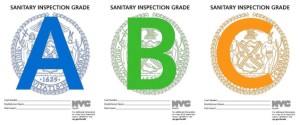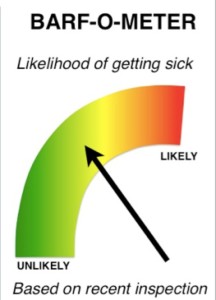One of the more compelling subplots on the was-AMC-now-Netflix series, The Killing, is one of the character’s broken relationship with her former case worker and parent figure – who lives on a house boat in Seattle.
That’s how much the show has devolved after a promising first couple of seasons.
Maybe I’m just bitter after investing 20+ hours of background watching.
Food safety in from mobile vendors has been much maligned, and propped up, but food boats are a new thing to me. In Portland (Maine) There’s at least one example of a food business operating on the open seas – from a small boat that delivers and sells food to boaters. According to Reason.com, Reilly Harvey, of Mainstay (the boat) had been shut down due to operating outside of food hygiene laws. But then given a reprieve with conditions.
The Portland (Maine) Press Herald had a fun slice-of-life feature on their hands. They found a woman, Reilly Harvey, who takes a small boat out into the state’s waters full of delicious homemade pies and entire lobster dinners to sell to boaters.
The desserts were just the beginning. Harvey’s boat, Mainstay, is rigged with a three-burner propane stove set in the stern, and three pots sat waiting for lobster, clams and butter, all of which Harvey had aboard. There were tubs of cauliflower-curry tofu salads with yogurt-lime-cilantro dressing and homemade biscuits that had come out of the oven less than an hour ago.
The day after the story appeared in the newspaper it was over. The state shut her down. There are rules, man! Where are her sinks? She has to have running water! From the Press Herald’s follow-up coverage:
“It makes me feel sick to my stomach and sad,” said Reilly Harvey, who runs Mainstay Provisions out of an old boat she keeps on Andrews Island. Harvey said she was contacted by a state health inspector and told she must pass health inspection standards for mobile vendors – think food trucks – and get her vintage 22-foot wooden launch, the Mainstay, fitted with sinks and hot and cold running water if she is going to continue to serve hot food.
There are only 3½ weeks left in her season. Unless she is able to comply with the regulations, it is unlikely she’ll be able to operate Mainstay Provisions as usual in 2014.
UPDATE: Ira Stoll has alerted me that Harvey has been granted a reprieve, requiring her to have a wash basin, five gallons of water, a food thermometer and a bucket to drain hot water. The permission-based society is so kind!






 may be part of this outbreak. Investigators are using data from PulseNet, the national subtyping network made up of state and local public health laboratories and federal food regulatory laboratories that performs molecular surveillance of foodborne infections.
may be part of this outbreak. Investigators are using data from PulseNet, the national subtyping network made up of state and local public health laboratories and federal food regulatory laboratories that performs molecular surveillance of foodborne infections. turtle might scratch her, a good thing.
turtle might scratch her, a good thing.